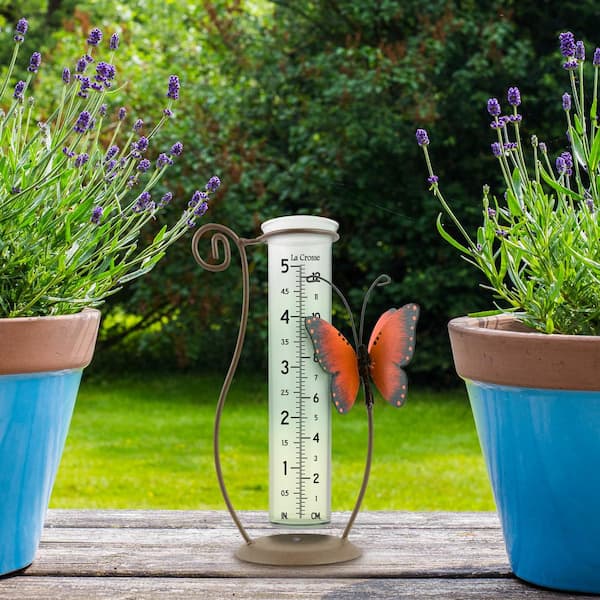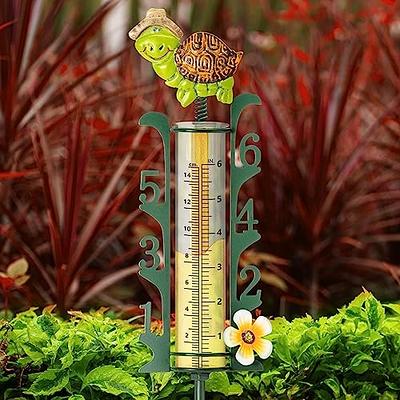The Rain Gauge: Equipping Neighborhoods with Accurate Rainfall Data
Wiki Article
Exactly How to Pick the Right Rainfall Scale for Accurate Rainfall Data
To acquire reliable dimensions, it is important to select the ideal rainfall scale. Thinking about aspects such as place, kind, and precision of the rainfall gauge will certainly assist guarantee specific data collection. Additionally, comprehending the maintenance and calibration treatments will add to the longevity and dependability of your rain scale.Importance of Picking the Right Rain Scale
The importance of picking the best rainfall gauge exists in obtaining exact and dependable rains data for precise atmospheric analysis. Rain data is vital for a large range of applications, including climate forecasting, hydrological modeling, and environment study. Inaccurate or unreliable data can cause wrong conclusions and flawed decision-making processes.
Second of all, the accuracy and accuracy of the rain scale are critical. The scale ought to be able to gauge rainfall with high accuracy, catching even little amounts of rainfall accurately.
In addition, the place and installation of the rainfall gauge are critical considerations. It should be positioned in an open area, far from obstructions that can impact rainfall dimensions. The scale should be placed at an appropriate elevation and angle to prevent splashing and make certain correct catchment of rainwater.
Elements to Take Into Consideration When Selecting a Rainfall Gauge
When picking a rain gauge, there are a number of crucial elements to think about. These variables can substantially affect the precision and integrity of the rains data collected. The very first factor to take into consideration is the kind of rain scale. There are different types available, including basic rainfall gauges, tipping bucket rain assesses, and considering rainfall gauges. Each type has its very own benefits and disadvantages, so it is necessary to select one that ideal matches your specific needs and demands.An additional factor to consider is the material of the rain scale. Rainfall assesses can be constructed from different materials, such as plastic, glass, or metal. The material selected ought to be resilient and resistant to climate condition, guaranteeing that the rain scale will certainly hold up against the components and supply precise measurements in time.
Accuracy is likewise a critical element to think about. Search for rain gauges that have actually been adjusted and examined for precision. Functions such as anti-splash rings and funnels can likewise improve the accuracy of the dimensions.

Finally, consider the climate and environment in which the rainfall scale will be utilized. Different rainfall gauges appropriate for various climates, so it is essential to pick one that is appropriate for the conditions in your location.
Different Kinds of Rainfall Evaluates Available
To better discover the elements to think about when selecting a rainfall scale, it is essential to comprehend the different types of rain evaluates readily available. The most usual kind is the standard rainfall scale, also known as the round rain scale.One more type of rain gauge is the tipping container rainfall gauge. As the rain drops right into the scale, it fills up one side of the container, causing it to empty the water and tip.
A 3rd type of rain scale is the considering rain scale. As the rain falls right into the scale, it is collected in a container attached to a balance.
Lastly, there are additionally remote rain determines that use progressed innovation to measure rains (The Rain Gauge). These evaluates usage sensors and transmitters to send information wirelessly to a central device. Remote rain evaluates are convenient for keeping track of rainfall in hard-to-reach locations or for massive data collection
Exactly How to Establish the Precision of a Rain Scale
One way to evaluate the accuracy of a rainfall scale is by performing regular calibration measurements. Calibration includes contrasting the analyses of a rainfall gauge to a common dimension, such as a certified rain gauge or a weather condition terminal with high precision. By contrasting the dimensions, any kind of discrepancies or inaccuracies in the rain scale can be determined and accounted for.To conduct a calibration measurement, begin by accumulating rains information from both the rain scale and the basic measurement tool over a specific time period, such as a month. Compare the readings and determine the difference in between them. This distinction is understood as the calibration error.
It is essential to note that calibration dimensions must be done on a regular basis, as ecological elements, such as temperature, wind, and particles, can impact the accuracy of the rainfall scale in time. By conducting normal calibrations, any type of modifications in the accuracy of the rainfall scale can be identified and changes can be made appropriately.
In enhancement to calibration, it is additionally suggested to tidy and maintain the rain gauge frequently to guarantee its precision. Eliminate any type of debris or official source obstructions that might impact the accuracy of the measurements, and examine for any type of signs of damage or put on that might require repairs or substitute.
Tips for Maintaining and Calibrating Your Rainfall Scale
Routine maintenance and calibration are vital for ensuring the accuracy and integrity of your rain scale in determining rains data (The Rain Gauge). By complying with a couple of simple ideas, you can ensure that your rain scale is correctly preserved and adjustedFirst of all, it is necessary to clean your rain scale on a regular basis to stop any kind of debris or dust from obstructing the rain collection device. Utilize a light detergent and a soft brush to gently clean up the within and exterior of the gauge. Rinse it thoroughly with tidy water and enable it to dry totally prior to reinstalling it.
Second of all, it is recommended to adjust your rainfall gauge at least as soon as a year. Calibration entails comparing the measurements of your rain scale with those of a trusted and exact reference gauge. This will certainly aid you identify and fix any type of possible mistakes in your rainfall gauge's measurements.
To calibrate your rainfall scale, gather a known quantity of water making use of a measuring container and compare it with the dimensions taped by your rainfall gauge. Change the analyses appropriately to guarantee precision.

Conclusion
In conclusion, picking the right rain gauge is essential for obtaining precise rains data. Aspects such as spending plan, function, and area must be thought about when choosing a rainfall gauge. There are numerous kinds of rain determines available, each with their very own advantages and restrictions. It is essential to frequently maintain and calibrate your rain gauge to guarantee its accuracy. By complying with these standards, accurate rainfall information can be obtained for read here various applications.There are different types readily available, including typical rain assesses, tipping bucket rainfall evaluates, and considering rainfall gauges.To further explore the elements to think about when selecting a rain scale, it is crucial to recognize the various kinds of rainfall assesses offered. The most typical kind is the common rainfall gauge, likewise recognized as the cylindrical rain gauge.One more kind of rain gauge is the tipping bucket rainfall scale. Calibration includes comparing the readings of a rainfall click this link scale to a typical dimension, such as a licensed rain gauge or a climate terminal with high accuracy.
Report this wiki page